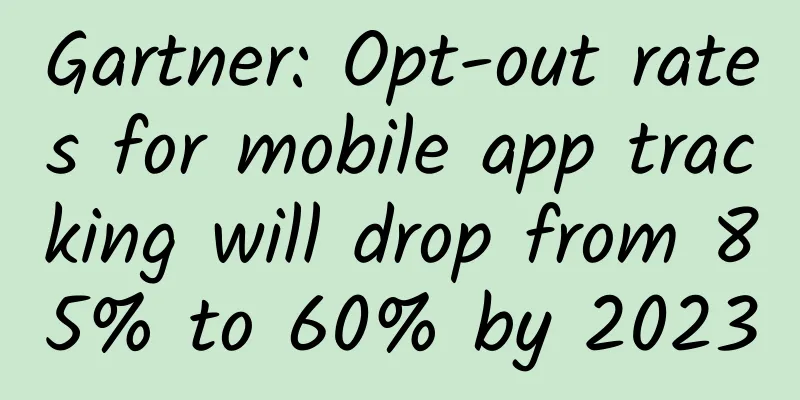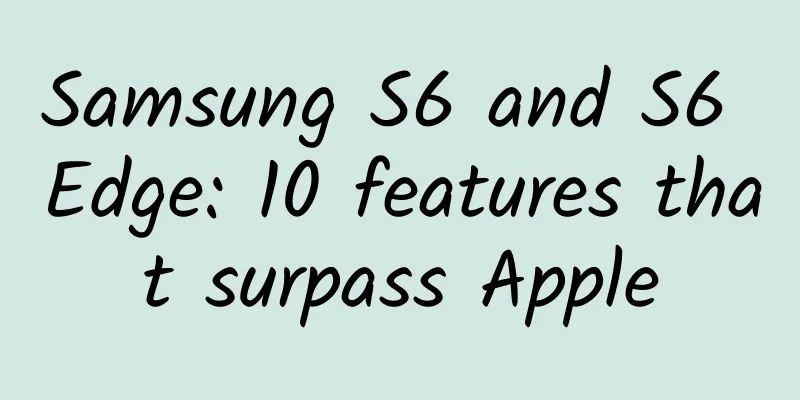Direct satellite phone call? You can also

|
After Huawei released the Mate 60 Pro mobile phone, satellite communication suddenly became popular among the public. Many people who bought it went to open areas to test the satellite communication capabilities of Tiantong-1. Because Tiantong-1 operates in a synchronous orbit 35,800 kilometers above the earth's surface, the satellite phone experience of mobile phones is worse than that of ground mobile communications. Not only does it take a certain amount of time to align with the satellite, but the time delay is also quite obvious. Despite this, users still enjoy it because it is the first popular satellite communication terminal in the history of communications. In fact, satellite phones have been developed for decades, and there are quite a few dual-mode mobile phones, that is, mobile phones that can make calls on both satellite and terrestrial mobile networks. However, these models have not deviated from the service professional market model. Looking back on the development history of this industry, people will feel the epoch-making significance of the Mate 60 Pro. Satellite phones also need numbers To use a satellite phone, you must have an open sky so that the phone and the satellite can "see" each other. Almost no one expects satellite phones to work indoors. But according to practice, if the roof is thin, electromagnetic waves can still pass through. Near a window or on the top floor of a building, there is still hope that a satellite phone can get through. In addition, people can also consider setting up a repeater, with a satellite antenna installed outdoors or outside a car, and then connecting it to an ordinary personal electronic terminal. According to the ITU Radio Regulations, mobile satellite services (MSS) are divided into land mobile satellite services, maritime mobile satellite services, and aeronautical mobile satellite services. Satellite phones must not only be able to connect to satellites, but also to global telecommunications networks. In other words, they must be able to call any phone number. Therefore, the satellite phone itself must also have a number. Telecommunications management departments in various countries have allocated dedicated number segments for satellite phones sold in their own countries, including Globalstar and Iridium. In this way, people can use ordinary landline phones and mobile phones to call satellite phones. However, the call charges for terrestrial calls to satellite phones are often higher than those for satellite phones to terrestrial calls or satellite phones to satellite phones. Therefore, unless it is necessary, we should not dial the other party's satellite number. China once ordered APMT mobile communications satellite from the United States, but was blocked by the US government If you use a low-orbit satellite phone, users may not feel the delay, which is one of the main reasons why Iridium has received good reviews. However, when using geosynchronous orbit satellite phones, including Tiantong-1, people have to consider the delay caused by a round trip of more than 70,000 kilometers. Although the number of 0.4 seconds does not seem large, you still need to adapt to it during actual calls. Because the syllable speed of human language is actually quite fast. Chinese can produce an average of 5.18 syllables per second, English can reach 6.19, and Japanese can even reach 7.84. Some words often have only one or two syllables, so the delay of 0.4 seconds is still very obvious. When using synchronous orbit satellite phones, you need to be a little patient. In low orbit, satellites can directly help mobile phones send and receive text messages MSS can also provide one-way communication services. For example, it can remind some users that they are currently in a poor coverage area and ask them to go to an area with better signal to make a call. In addition, Globalstar provides a one-way data uplink service, which is usually used for asset tracking. Iridium also once operated a one-way pager service, but it has long been eliminated. The signal from the ground tower will not be interfered by the satellite The difference between satellite phone and satellite mobile phone Like terrestrial mobile phones, most satellite phones support voice calls, text messages, and low-bandwidth Internet access. The advantages of satellite phones are well known. They can be used in areas without terrestrial communication infrastructure such as landlines and cellular networks, so people who go on recreational hiking, hunting, fishing, and boating trips prefer satellite phones. Some commercial users, such as mining and marine transportation, also tend to use satellite phones. So far, satellite phones have rarely been disrupted by natural disasters or human activities such as war on Earth, and are a reliable communication tool in emergency situations. In a broad sense, a satellite phone is a type of satellite mobile communication terminal. There are only two scenarios for using satellite phones: one is sitting in a cabin, and the other is walking in the wild. The cabin here may be a cabin, a ship cabin, or a car cabin. Because the requirements for weight and power supply capacity for phones used in cabins are relatively loose, traditional handsets can often be used, with a not-too-small fuselage. When in use, the handset is buckled on this fuselage, picked up when making a call, and hung back when not making a call. For a long time, maritime satellite phones existed in this form. Nowadays, except on ships and airplanes, the use of this type of satellite phone has become less and less. For example, almost every civil airliner has a maritime satellite phone that can be provided to users for emergency use. They all use traditional handsets. The satellite phones that people are discussing nowadays are more like satellite phones. In fact, most satellite phones look a bit like walkie-talkies. They are relatively large in size, thick in body, and have a thick and long satellite antenna, so that they can communicate with satellites in geosynchronous orbit. Even the Iridium phones that communicate with low-orbit satellites are not small in size, and the antennas are also thick and long, which is mainly to improve the signal quality and achieve continuous and clear voice calls. With the development of touch-screen phones, satellite phones are also moving in this direction. Tiantong-1 has a full-touch-screen model, and of course it has not been able to get rid of the thick black antenna. Mate 60 Pro is the first satellite phone model that does not require a large antenna. Iridium Cell Phone How much does a satellite call cost? A prominent feature of satellite phones is that they are expensive. For example, the Iridium 9505A phone was released in 2001 and costs thousands of dollars. Inmarsat's BGAN terminals are usually worth thousands of dollars. Their call costs are also quite high, ranging from $3 to $14 per minute for voice calls from landlines and ordinary mobile phones. Calls between different satellite phone networks are usually very expensive, with call charges as high as $15 per minute. Calls from satellite phones to landlines are usually about $0.80 to $1.50 per minute. Most satellite phone networks have prepaid plans, with vouchers ranging from $100 to $5,000. Inmarsat's BGAN Terminal In comparison, the 6,999 yuan price of the Mate 60 Pro and the Tiantong-1 call charge of more than 1 yuan per minute are quite cost-effective. Satellite phones usually have special country calling codes. The Inmarsat satellite phone code is +870. However, at the end of 2008, codes +871 to +874 were phased out. Low-orbit systems are assigned a number range in the International Telecommunication Union's Global Mobile Satellite System virtual country code +881. For example, Iridium satellite phones have codes +8816 and +8817. Globalstar, although assigned +8818 and +8819, uses US phone numbers. Smaller regional satellite phone networks are assigned numbers in the +882 code, which is designated for "international networks". Legal restrictions The advantage of satellite phones is that they are not hindered by ground conditions, but sometimes this is also a disadvantage. Most countries will not allow a communication system within their borders that can completely bypass government regulation. Therefore, satellite phone systems must obtain a license in a specific country to operate, which is called landing. If someone uses an unlicensed satellite phone, it is a criminal act. Even in some countries, most satellite phones are illegal because the judicial authorities are worried that satellite phones will become a tool for terrorist activities. For example, in India, only maritime satellite phones can be used legally, and all other systems, including the Thuraya and Iridium systems, are illegal. Satellite phone with handset The future of satellite-to-cell phones What is the future of satellite phones in the development of the communications industry? According to the vision of the communications industry for 6G, it will be a communications system that integrates high-orbit and low-orbit satellites and covers all corners of the world. Therefore, 6G terminals must consider satellite communications, including voice communications, broadband communications, and narrowband IoT communications. In other words, in the 6G era, the boundary between ordinary mobile phones and satellite phones will completely disappear, and all consumer mobile phones will have satellite communications capabilities, just like the common shooting function today. In fact, this process has already begun. About two or three years ago, mobile phone manufacturers and satellite operators began to explore how to connect ordinary smartphones directly to satellites. In fact, in the frequency bands used by ordinary telecom operators, the 2G part overlaps with the L band and S band. The reason why there is no interference at ordinary times is that the signal strength of the ground tower is much stronger than that of the satellite, and the satellite cannot interfere with the tower. In uninhabited areas and disaster areas suitable for satellite phones, there are no towers and no interference with satellites. However, the antenna gain and signal processing capabilities of ordinary mobile phones are not suitable for direct connection to satellites. If some improvements can be made to this, at least ordinary mobile phones can use satellites to send and receive text messages and even emergency voice communications. Direct-connection mobile phone satellite under development In 2022, Apple iPhone 14 began to support sending emergency text messages via Globalstar satellites. In 2023, Apple iPhone 15 began to provide satellite communication services in the United States, but it was not directly connected to the satellite, but passed through a relay station set up on the roadside. In 2022, multinational telecommunications operator T-Mobile cooperated with Starlink to try to use Starlink services through the existing LTE/5GNR spectrum. Also in 2022, the US AST SpaceMobile decided to build a new space cellular constellation that uses the same communication protocol as ground towers, allowing existing, unmodified smartphones to connect to satellites. In 2023, Qualcomm announced that it would add support for Iridium to the Snapdragon 8 Gen 2 chipset. Android phones using this chipset can send and receive text messages through Iridium. At present, it is not difficult to directly connect satellites to mobile phones and provide short message type communication capabilities. However, providing voice services requires certain technical development. Of course, such an industrial development trend will also bring new problems. Currently, the frequency resources used for MSS services are very limited, with only a small part of the L-band and S-band resources, which together do not exceed 100 MHz. If consumer mobile phones around the world can generally use satellite communications, then this small amount of frequency resources will definitely not be able to meet the needs of billions of people. Even if they are used occasionally, conflicts and interference will occur. Therefore, whether the integration of frequency resources between satellite mobile services and terrestrial mobile services should be considered is a question worth studying. The development of communication technology is advancing by leaps and bounds, even faster than the progress of integrated circuit technology. It took only about 40 years from the emergence of 1G in the 1980s to the popularization of 5G. At this rate of development, 6G will appear in people's daily lives in the near future. By that time, everyone can say that they are a satellite communication user, which was unimaginable in the early days of aerospace technology. |
>>: To help you vent your anger, we will fight violence with violence against the annoying catkins.
Recommend
19 dead, 63 injured! Just because of an electric heater! How to use heating equipment safely?
The deadliest fire in more than 30 years broke ou...
E-commerce operations: analysis of the promotion system!
E-commerce has been integrated into our lives and...
Su Shengjun's money-making system 20-lecture course video
Money Making System Course Catalog Earning money ...
What are the industries that are prohibited for Douyin enterprise certification and Douyin Blue V banned from entering?
As Douyin's short video conversion and traffi...
Effective techniques to increase followers through Baidu promotion! Replicable practical cases!
In the cold winter of the Internet, many friends ...
A hit copywriting must have a golden sentence: 6 tips for creating a golden sentence in copywriting
A copywriting that can touch people's hearts ...
Tang Zhenzong’s personal profile: How to convert more potential customers through the website?
In past business optimization experiences, Xiaohe...
Teammates sacrificed, first love got married, and police officer An Xin's hair turned white overnight. Can people really turn white overnight when they suffer a major blow?
"Kuang Da" has reached its finale. The ...
Is there no place for medical soft-text promotion anymore? Sogou follows Baidu in launching a big move!
Following Baidu's release of the " Notic...
The best display ever? An in-depth analysis of the iPhone 7 screen
When you first see the iPhone 7 screen, to be hon...
Look once, it's weird, look again
There is a type of insect that lives on the earth...
To be honest! You really don’t need to take a shower every day in winter
Taking a bath in winter must be something that ma...
Can you recommend some small entrepreneurial projects? What are some violent industries that no one pays attention to?
Is it possible to start a business without capita...
The secret behind the popularity of live streaming marketing
To put it bluntly, live streaming is still a show...









